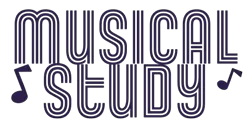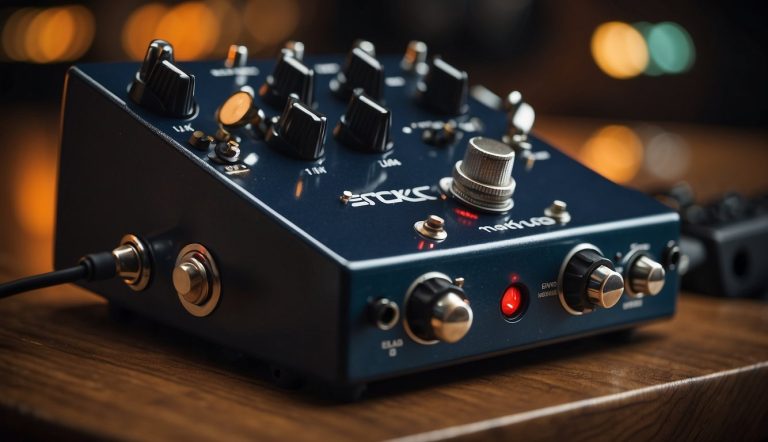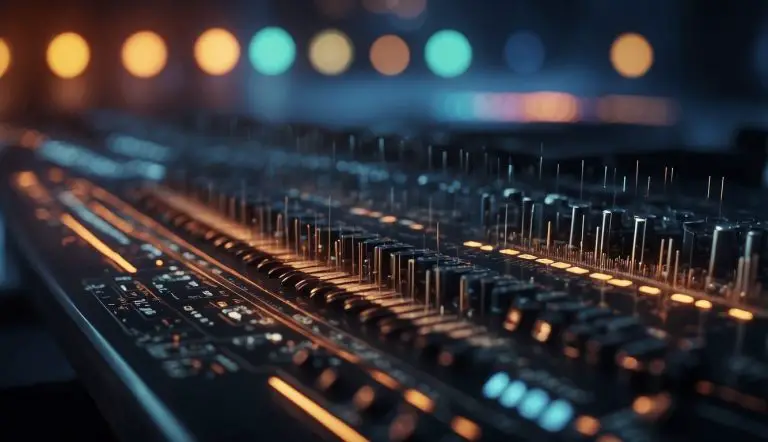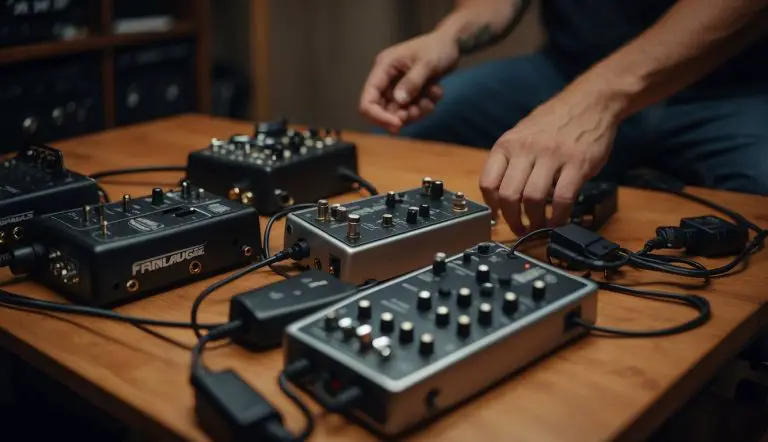What is the Difference Between Reverb, Echo, and Delay: Understanding Audio Effects
In audio production and live performances, the manipulation of sound through effects such as reverb, echo, and delay is critical in creating the desired auditory landscape.
Reverb, or reverberation, is the effect that results from sound waves reflecting off surfaces and blending together, giving the listener a sense of the physical space.
This is a natural occurrence that can be reproduced artificially to emulate different environments, from small rooms to large halls.
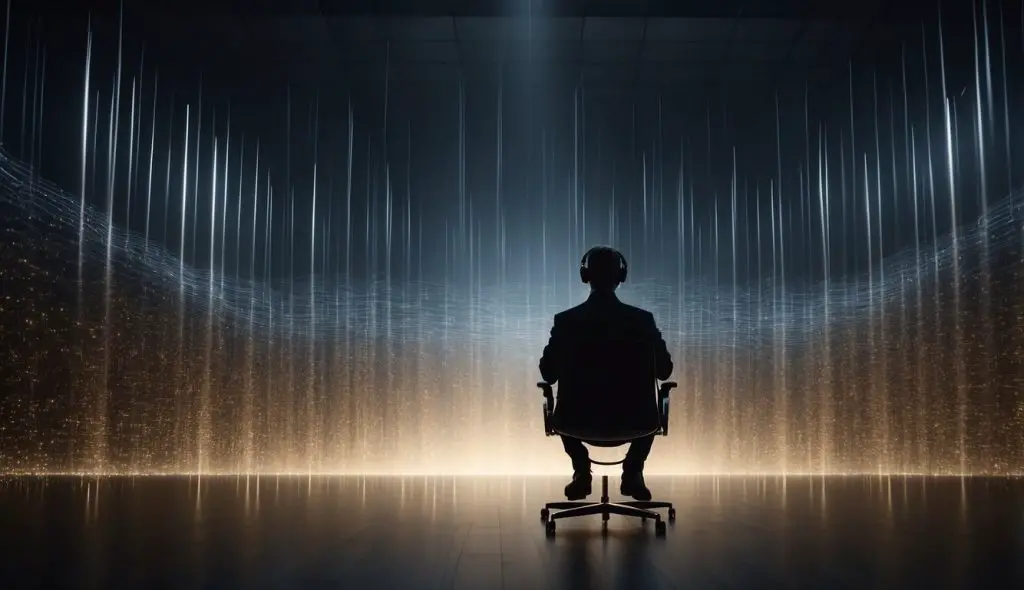
Echo and delay, while often confused with reverb, are distinct effects. An echo is a single or multiple repetitions of a sound that is heard after the initial sound has occurred, typically at a distance that allows the listener to discern between the original sound and the reflection.
Delay, in the context of audio effects, is an effect that records an audio signal for playback after a set period of time. It can create a simple repeat of a sound, complex rhythmic patterns, or a dense wash of sound that approaches the effect of reverb when the repeats are closely spaced.
Key Points
- Reverb creates a sense of space, simulating the sound reflections from surfaces in an environment.
- Echo is a distinct repeat of a sound at a delay that allows differentiation from the original source.
- Delay is an effect that plays back a sound after a controlled period, creating rhythmic patterns or filling out a mix.
Table of Contents
Understanding Sound and Space
In this section, I will clarify the interaction between sound waves and the environments they inhabit, which is fundamental to comprehending the phenomena of echo, reverb, and delay.
The Nature of Sound Waves
Sound waves are mechanical vibrations that travel through a medium, such as air, water, or solid materials. As I speak, for instance, my vocal cords create disturbances in the air particles, propagating as waves. These waves have certain characteristics:
- Frequency: The number of oscillations per second, measured in Hertz (Hz), determines the pitch of the sound.
- Amplitude: The size of the wave’s oscillations, corresponding to the volume or loudness.
- Speed: Dependent on the medium, with sound typically traveling at about 343 meters per second in air at room temperature.
Reflections and Acoustics
When sound waves encounter surfaces, they are not absorbed completely; instead, they reflect and spread out into the space. Here are some specifics:
- Natural Echo: A natural echo occurs when sound waves reflect off a surface—like a building or canyon wall—far enough away that the delay lets me hear the sound after I stop making it.
- Reflections: These are key to acoustics, which is the study of how sound behaves in an enclosed space. Walls, ceilings, and furnishings can absorb, diffuse, or redirect sound waves, altering how I perceive them.
- Reverberation: This happens when reflections create a persistence of sound after the original sound has stopped. In small rooms, I may not distinctly hear this effect, but in larger spaces or special acoustical environments, it becomes evident.
In these ways, sound waves interact with spaces to create the rich tapestry of audible experiences we encounter daily.
The Basics of Reverb, Echo, and Delay
In this section, I’ll differentiate between reverb, echo, and delay—three sound phenomena with distinct characteristics such as decay time, feedback, and the emulation of distance. Understanding these differences is essential for manipulating audio in any production or live environment.
Reverb and Its Characteristics
Reverb, or reverberation, is the persistence of sound after it is produced, caused by the reflection of sound waves from surfaces such as walls and ceilings. It gives a sense of space and depth to audio, which is why it is often associated with the natural acoustics of environments like concert halls. The decay time of reverb is a key feature, indicating how long the reverberation lasts before dissipating below the threshold of hearing.
Natural reverb is inherently part of every environment, but artificial reverberation is created using digital algorithms to simulate different spaces. Parameters such as pre-delay and room size can be adjusted to shape the reverberation’s effect according to the desired outcome.
Echo: Repetition and Distance
Echo is the reflection of sound, arriving at the listener’s ear some time after the direct sound. It is characterized by distinct repetitions of the original audio signal and often conveys a sense of distance. In natural settings, an echo occurs when sound waves reflect off a surface far enough away that the listener perceives a delay between the original sound and its reflection.
The echo effect can be replicated artificially to enhance musical tracks or for creative purposes. Unlike reverb, echo tends to be more discernible as separate repeats of the sound source.
Delay: Controlled Repetitions
Delay refers to the time it takes for a sound to be repeated and the repetitions themselves. It’s an audio effect that records an input signal to an audio storage medium and then plays it back after a period of time, the delay time. This effect can range from a few milliseconds to several seconds. Delay effects can have various parameters such as the number of repeats (feedback), which allows control over how many times the delayed sound will occur.
Feedback control is crucial; if the feedback is too high, it can cause the sound to repeat indefinitely and potentially lead to audio feedback—a loop of repeated sound. Precise adjustment of delay settings is fundamental for achieving the desired level of this effect, whether for subtle enhancement or more pronounced rhythmic patterns.
Through understanding the distinct auditory properties and applications of reverb, echo, and delay, I can effectively deploy these effects, each bringing its unique dimensionality and texture to the soundscape.
Applications in Music Production
In my experience, applying reverb, echo, and delay effectively can greatly enhance vocals and instruments, contributing to the overall clarity and sound quality of a mix.
Effects Processing for Vocals and Instruments
For vocals, I often apply reverb to give them a sense of space, which can make a vocal track feel more natural or ethereal, depending on the amount used. The key is to balance reverb with the original dry signal to avoid muddiness. When it comes to instruments like the guitar, reverb can help in creating a sense of depth, making a dry guitar signal sound as if it’s being played in a larger room or hall.
Echo, which is a distinct repetition of sound, is less commonly used than reverb but can add a creative element to certain tracks. In some of my projects, a slapback echo on guitars can infuse a rockabilly vibe, or a well-timed echo can add rhythmic interest.
Delay is a versatile effect that can create a range of outcomes from subtle thickening of the vocal harmony to pronounced tempo-synced echoes that rhythmically interact with a mix. I frequently use delay on lead guitar parts to create a sense of movement or on backing vocals to fill out the soundscape without overwhelming the main vocal.
Vocal Processing:
- Reverb: Add for space and depth
- Echo: Apply sparingly for creative effect
- Delay: Use to thicken or create rhythmic patterns
Instrument Processing:
- Reverb on Guitar: Impart a sense of environment
- Echo on Guitar: Introduce vintage or rhythmic flavors
- Delay on Lead Guitar: Enhance lead lines and solos
Utilizing Effects in Mixing and Mastering
During mixing, my approach involves using these effects not only to enhance individual tracks but also to help them sit properly within the entire mix. I carefully EQ reverb and delay sends to ensure they don’t clutter the mix and retain the tonal balance. I tend to use shorter reverb times and more predelay for faster tempo songs to maintain clarity. Conversely, slower songs might benefit from longer reverb tails for a more dramatic atmosphere.
In mastering, I seldom add additional reverb or delay, as my goal is to preserve the integrity of the mix while ensuring consistent sound quality across all playback systems. However, subtle enhancement and spatial adjustments can be made if necessary.
Mixing Tips:
- Balance wet/dry signal for clarity
- EQ effects to fit the mix and prevent muddiness
- Align delay times with the tempo for cohesion
Mastering Considerations:
- Preserve mix dynamics
- Adjust spatial qualities subtly if needed
- Maintain tonal and temporal balance for uniform sound quality
Types of Reverb and Delay
In exploring the landscape of audio effects, I find that reverb and delay are pivotal in achieving desired spatial characteristics in sound. While reverb adds depth and space, mimicking various environments, delay repeats the original signal after a specified time interval. Both effects have a range of types tailored to specific sonic qualities.
Reverb Types: Plate, Spring, and Hall
Plate Reverb: This type uses a large sheet of metal to produce reverberation. When a sound signal is fed into the system, it vibrates the metal plate. The resulting reverberations are then picked up by contact microphones. Plate reverb is renowned for its bright and dense quality, which has made it a staple in studio effects racks.
Spring Reverb: In this type of reverb, audio signals are passed through a spring, which causes it to oscillate. The vibrations travel through the spring and are then converted back into an audio signal at the other end. It’s known for its distinctive ‘boingy’ character and is a popular choice for guitar amps.
Hall Reverb: Designed to emulate the sound of large spaces such as concert halls, this reverb type captures the complex reflections characteristic of grand, open environments. Hall reverb is often used for orchestral or classical recordings to add a sense of expansiveness.
Delay Variations: Tape, Analog, and Digital
Tape Delay: This is the original delay effect, created by recording sound onto a tape and then playing it back after a short period. I note its warmth and the subtle pitch variations (wow and flutter) that add character to the repeated sound.
Analog Delay: Utilizing bucket-brigade devices (BBDs), analog delay offers a warmer, sometimes darker echo compared to digital delays. It’s characterized by a gradual degradation of the delay repeats, which some users prefer for its musicality.
Digital Delay: By converting the input signal into a digital format, it can be delayed with precision and clarity. This type of delay can provide crisp, clean repetitions and is capable of longer delay times than analog delays. Additionally, digital processing allows for more complex delay patterns and modulation effects.
Technical Aspects and Control Parameters
In this section, I’ll detail the technical elements and the various adjustable parameters that shape time-based audio effects like reverb, echo, and delay.
Manipulating Time-Based Effects
Time-based effects such as reverb and delay are critical to adding dimension to sound. When I manipulate these effects, I usually focus on key control features to achieve the desired audio landscape.
- Pre-Delay: Sets the time between the original dry sound and the start of the reverberant effect. This mimics the time it takes for sound to bounce off distant surfaces in a large room or hall. Control Function Pre-Delay Delays onset of reverb to simulate space.
- Decay Time (Reverb Time): Governs the duration it takes for the reverb to reduce to inaudibility, effectively controlling how “large” a space sounds. Control Function Decay Time Controls duration of reverberation for realism.
Understanding Feedback, Depth, and Decay
- Feedback: In terms of delay effects, feedback determines how many times the delayed signal is repeated. I tweak this knob to either create a subtle echo or a more pronounced, cascading series of delays. Control Function Feedback Adjusts the number of repetitions in a delay.
- Depth: Controls the perceived distance of the sound source, adding richness and context to the effect by modulating delay lines or reverb tails. Control Function Depth Adds feel of distance and space to sound.
Modulation plays a significant role both in reverberation and delay by varying the time of the delay lines, creating a sense of movement and complexity within the effect. If I’m using pedals, the knobs for modulation can widely vary the character of the effect by introducing pitch and amplitude variations.
I handle these parameters with care, as they are powerful tools for shaping the acoustic personality of a track. Each adjustment can transport the listener to a different sonic space, alien or familiar, with the twist of a knob or the slide of a fader.
Frequently Asked Questions
In this section, I’ll clarify common inquiries about the distinctions and applications of reverb, echo, and delay in music and sound production.
What distinguishes a reverb pedal from an echo pedal when used with guitars?
A reverb pedal creates the effect of sound waves reflecting off surfaces in a space, giving me a sense of ambiance and spatial depth.
An echo pedal, on the other hand, replicates a sound after a short delay, producing a discrete repetition of the original sound.
How do reverb and delay pedals differ in the way they process sound?
Reverb pedals give me the acoustic signature of a physical space by blending reflections so closely together that they’re perceived as a continuous sound.
Delay pedals create distinct, repeated copies of a signal at set intervals, which can be adjusted in time and volume.
Can you utilize both delay and reverb effects simultaneously for guitar playing?
Yes, I can use both effects together to add complexity to the guitar tone. Delay can provide distinct echoes, while reverb can fill out the sound.
Using them in conjunction allows me to enrich my playing with depth and rhythmic texture.
In terms of sound production, how is echo different from delay in music?
In music production, “echo” usually refers to the natural repetition of a sound that’s heard after a delay, akin to shouting in a canyon.
“Delay” is an audio effect that creates echoes deliberately, with control over timing, repetition, and sometimes the timbre of the echoes.
When selecting effects for singing, should one opt for reverb or echo?
The choice between reverb and echo for singing depends on the desired outcome. I use reverb to give warmth and resonance to vocals, which is subtle.
Echo can be used to create a specific rhythmic pattern or a call-and-response effect, which is more pronounced.
What are the distinct sonic characteristics of reverb, delay, and echo in a karaoke setting?
In karaoke, reverb adds richness and a sense of space to the vocals, making the singer feel like they’re performing in a larger room.
Delay creates repetitions of the vocal line, adding emphasis or dramatic effect. Echo, if present in the system, gives a natural replication effect as if singing in an acoustically reflective environment.
